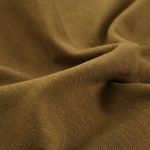Are you tired of spending hours ironing your clothes only to have them still look wrinkled? Look no further! This article will provide you with efficient ironing strategies to help you achieve perfectly pressed garments.
From choosing the right ironing temperature to using steam for effective wrinkle removal, we’ve got you covered. Say goodbye to stubborn creases and hello to a wrinkle-free wardrobe.
Table of Contents
Choosing the Right Ironing Temperature
To achieve optimal results when ironing your clothes, it’s crucial to select the appropriate ironing temperature based on the fabric type. This is an essential step in ironing time management and can save you valuable minutes in your daily routine. By understanding the different heat settings and their effects on various fabrics, you can iron your clothes efficiently and effectively.
One of the ironing hacks that can help you choose the right temperature is to check the fabric care label. Most clothing items come with instructions on how to care for the fabric, including the recommended ironing temperature. By following these guidelines, you can avoid damaging your clothes and ensure they look their best.
Additionally, certain fabrics require lower heat settings, while others can withstand higher temperatures without any damage. For example, delicate fabrics like silk and chiffon should be ironed at a lower heat setting, while cotton and linen can handle higher temperatures. By adjusting the iron’s temperature accordingly, you can prevent scorching or burning your garments.
Preparing Fabrics for Ironing
Before you start ironing, make sure to properly prepare your fabrics with a few simple steps. Proper fabric care and preparation can make a significant difference in the end result of your ironing.
One important step is to check the fabric label for any specific ironing instructions. Some fabrics may require special care or a lower ironing temperature to avoid damage.
To begin, check your fabrics for any stains or spills. It’s crucial to treat these areas before ironing to prevent setting the stains permanently. Gently blot the stains with a stain remover or laundry detergent, following the instructions on the product. Allow the stain remover to work its magic for a few minutes before rinsing it thoroughly.
Next, make sure your fabrics are clean and dry. Ironing dirty or damp fabrics can lead to wrinkling or even damage. If necessary, give your fabrics a quick wash and dry them completely before ironing.
Lastly, it’s a good idea to sort your fabrics by type and weight. Ironing lighter fabrics first and gradually moving to heavier ones can help you achieve better results. Additionally, separating fabrics by color can prevent any color transfer or staining.
Using Steam for Effective Wrinkle Removal
Are you tired of spending hours ironing your clothes and still not getting rid of those stubborn wrinkles?
Well, using steam for wrinkle removal might just be the solution you need.
Steam offers a more efficient and effective way to eliminate wrinkles compared to traditional ironing methods.
Plus, with the availability of various steam iron brands on the market, you can find the perfect one to suit your needs.
Steam Vs Traditional Ironing
When ironing your clothes, using steam instead of traditional ironing methods can provide you with more effective wrinkle removal. Here are four reasons why steam is a better option:
-
Gentle on fabrics: Steam helps relax the fibers, reducing the risk of damage caused by excessive heat. This makes it suitable for delicate fabrics like silk or chiffon.
-
Efficient and time-saving: Steam penetrates the fabric faster and more evenly, allowing wrinkles to be released quickly. This saves you valuable time, especially when dealing with a large pile of laundry.
-
Versatility: Steam irons can be used vertically, making it easier to remove wrinkles from hanging garments, curtains, or upholstery. No need to take them down or struggle with ironing boards.
-
Adjustable settings: Steam irons come with adjustable temperature and steam controls, allowing you to customize the ironing process based on the fabric type. This ensures optimal wrinkle removal without the risk of scorching or burning your clothes.
Benefits of Steam
To effectively remove wrinkles from your clothes, using steam offers numerous benefits.
One of the advantages of using steam is that it allows you to iron your clothes with distilled water. This ensures that no mineral deposits or impurities are left behind, which can cause damage to your garments over time.
Additionally, using steam for wrinkle removal has the benefit of vertical steam. This means that you can easily hang your clothes on a hanger and steam them vertically, without the need for an ironing board. Vertical steam is especially useful for delicate fabrics that can’t withstand the pressure of a traditional iron.
With the benefits of ironing with distilled water and the convenience of vertical steam, using steam for wrinkle removal is an efficient and effective method for keeping your clothes looking fresh and wrinkle-free.
Best Steam Iron Brands
Using steam for effective wrinkle removal, you’ll want to consider the best steam iron brands available on the market. These brands offer advanced features and provide excellent results when it comes to ironing your clothes. When comparing prices, keep in mind that higher-end brands may come with a higher price tag, but they often offer more durability and better performance.
Here are four top steam iron brands to consider:
-
Rowenta: Known for their high-quality steam irons, Rowenta offers advanced features such as precision tip for hard-to-reach areas and powerful steam output for efficient wrinkle removal.
-
Black+Decker: Offering a balance between affordability and performance, Black+Decker steam irons provide a range of features, including variable steam control and easy glide soleplates.
-
T-fal: T-fal steam irons are known for their durability and fast heating capabilities. They also come with features like anti-drip systems and large water tanks for uninterrupted ironing.
-
Hamilton Beach: Hamilton Beach steam irons offer a budget-friendly option with features like vertical steam and self-cleaning functions, ensuring effective wrinkle removal at an affordable price.
Consider your budget and the specific features you need when choosing the best steam iron brand for your fabric care needs.
Ironing Techniques for Different Fabrics
Now let’s talk about ironing techniques for different fabrics.
When it comes to delicate fabrics, it’s important to use a gentle touch and lower heat settings to avoid any damage. A heat settings guide can help you determine the appropriate temperature for each fabric type, ensuring effective wrinkle removal without causing any harm.
Delicate Fabric Ironing
When ironing delicate fabrics, it’s important to handle each fabric type with care and use the appropriate ironing techniques. Here are some tips to help you iron delicate fabrics:
-
Silk: Set your iron to a low temperature and use a pressing cloth to protect the fabric. Gently glide the iron over the fabric, avoiding any excessive pressure or dragging.
-
Chiffon: Use a cool iron with a low steam setting. Lay the chiffon on a padded surface and iron it in gentle, circular motions to prevent snagging.
-
Lace: Place a clean white towel over the lace fabric and press it lightly with a cool iron. Avoid pressing directly on the lace to prevent any damage to its delicate details.
-
Cashmere: Turn the cashmere garment inside out and place a damp cloth over it. Set the iron to a low heat and gently press the cloth to remove any wrinkles, being careful not to apply too much pressure.
Heat Settings Guide
To ensure optimal results when ironing different fabrics, it is important to adjust the heat settings according to the fabric type. Ironing temperature control is crucial for maintaining the quality and appearance of your clothes. By using the right heat setting, you can prevent damage such as scorching or melting. Additionally, proper ironing time management is essential to avoid spending too much time on each garment. Below is a handy guide to help you determine the ideal heat settings for different fabrics:
| Fabric Type | Heat Setting |
|---|---|
| Cotton | High |
| Linen | High |
| Silk | Low |
| Wool | Low |
| Polyester | Medium |
Quick Wrinkle Removal
To quickly remove wrinkles from different fabrics, employ specific ironing techniques that cater to each fabric’s needs. Here are some quick ironing hacks and time-saving ironing tips:
-
Cotton and Linen: Set your iron to a high temperature and use steam to easily smooth out the wrinkles in these sturdy fabrics. Glide the iron over the fabric in long, sweeping motions.
-
Silk and Delicates: Lower the iron’s temperature to a silk setting and place a clean, dry cloth between the iron and the fabric. Gently press the iron onto the cloth, allowing the steam to penetrate the fabric and remove the wrinkles.
-
Wool: Use a steam iron on a low temperature setting or a handheld steamer to refresh wool garments. Keep the iron or steamer a few inches away from the fabric and hover over the wrinkles to release the steam.
-
Synthetic Fabrics: Turn your iron to a low heat setting or use a garment steamer to remove wrinkles from synthetic fabrics. Glide the iron or steamer over the fabric, being careful not to apply too much pressure.
Tips for Efficient Ironing
To ensure efficient ironing, start by using the right amount of heat for your specific fabric. Different fabrics require different temperatures to avoid damage or ineffective ironing. Check the care label on your garments to determine the recommended heat setting. By using the correct heat, you can save time and energy while achieving wrinkle-free results.
One of the ironing hacks that can save you time is to sort your clothes by fabric type before you start ironing. This way, you can set the iron to the appropriate temperature for each group of fabrics and streamline the process. Additionally, it helps to have a dedicated ironing space, preferably near a power outlet, so you don’t waste time setting up and packing away your ironing equipment.
Another time-saving strategy is to use a spray bottle filled with water to spritz your clothes lightly before ironing. This moisture will help relax the fabric and make it easier to remove wrinkles. For even more efficiency, consider investing in a steam iron, which combines ironing and steaming functions in one device.
Lastly, when ironing, work in small sections and use firm, smooth strokes. This approach will help you cover the entire garment evenly and achieve better results in less time. Remember to always iron in the direction of the fabric’s grain for the best outcome.
Ironing Troubleshooting: Common Problems and Solutions
If you encounter common problems while ironing, such as stubborn wrinkles or fabric shine, here are some solutions to help you achieve flawless results.
-
Use the right ironing technique: Ironing in the wrong direction can cause wrinkles to become even more stubborn. Always iron in the opposite direction of the wrinkles to smooth them out effectively.
-
Adjust the heat setting: Fabric shine occurs when the iron is too hot for the fabric. Lowering the heat setting can prevent this issue and protect your clothes from damage.
-
Dampen the fabric: For stubborn wrinkles, dampen the fabric slightly before ironing. The moisture will help relax the fibers, making it easier to smooth out the creases.
-
Choose the right ironing board: A good ironing board can make a significant difference in your ironing experience. Look for one with a sturdy surface and adjustable height to ensure comfort and efficiency.
By following these solutions, you can troubleshoot common ironing problems and achieve professional-looking results.
Proper Iron Storage and Maintenance
How can you effectively store and maintain your iron?
Proper iron storage and maintenance are crucial to ensure the longevity and optimal performance of your iron. To start, it’s essential to keep your ironing board in good condition. Regularly inspect it for any loose screws or wobbly legs, tightening or repairing as needed. Additionally, clean your ironing board cover regularly, following the manufacturer’s instructions.
When it comes to iron maintenance, cleaning techniques play a significant role. Start by unplugging your iron and ensuring it has cooled down. Wipe the soleplate with a damp cloth to remove any residue or built-up grime. For stubborn stains, you can mix a small amount of baking soda with water to create a paste and gently scrub the soleplate. Remember to wipe away any excess paste with a clean cloth.
Furthermore, it’s important to descale your iron periodically to remove any mineral deposits that might affect its performance. Follow the manufacturer’s instructions for the descaling process, using a suitable descaling solution or a mixture of vinegar and water.
Frequently Asked Questions
Can I Use an Ironing Board for All Types of Fabrics?
Yes, you can use an ironing board for most fabrics, but delicate fabrics require special care. For those, consider alternatives like steaming or using a pressing cloth to avoid damaging the fabric.
How Often Should I Clean My Iron?
You should clean your iron regularly to maintain its performance and prevent any damage to your fabrics. The cleaning frequency depends on your usage, but a general rule is to clean it every few months or as needed.
Can I Use Steam to Remove Wrinkles From Delicate Fabrics?
Yes, you can use steam to remove wrinkles from delicate fabrics. It is a gentle and effective method. Alternatively, you can try other methods like using a fabric steamer or hanging the garment in a steamy bathroom.
Is It Safe to Iron Clothes With Embellishments or Prints?
Yes, it’s safe to iron clothes with embellishments or prints. To avoid damaging the design, turn the garment inside out and use a low heat setting. Gently press the iron over the fabric without applying too much pressure.
What Is the Ideal Ironing Temperature for Synthetic Fabrics?
To prevent damage when ironing synthetic fabrics, be sure to adjust your ironing temperature to the appropriate setting. Follow the recommended temperature guidelines for synthetic fabrics to ensure efficient ironing techniques.
- Recycling Nonwoven Fabrics: Is It Possible? - July 11, 2025
- Recycling Nonwoven Fabrics: Is It Possible? - July 11, 2025
- Recycling Nonwoven Fabrics: Is It Possible? - July 11, 2025






